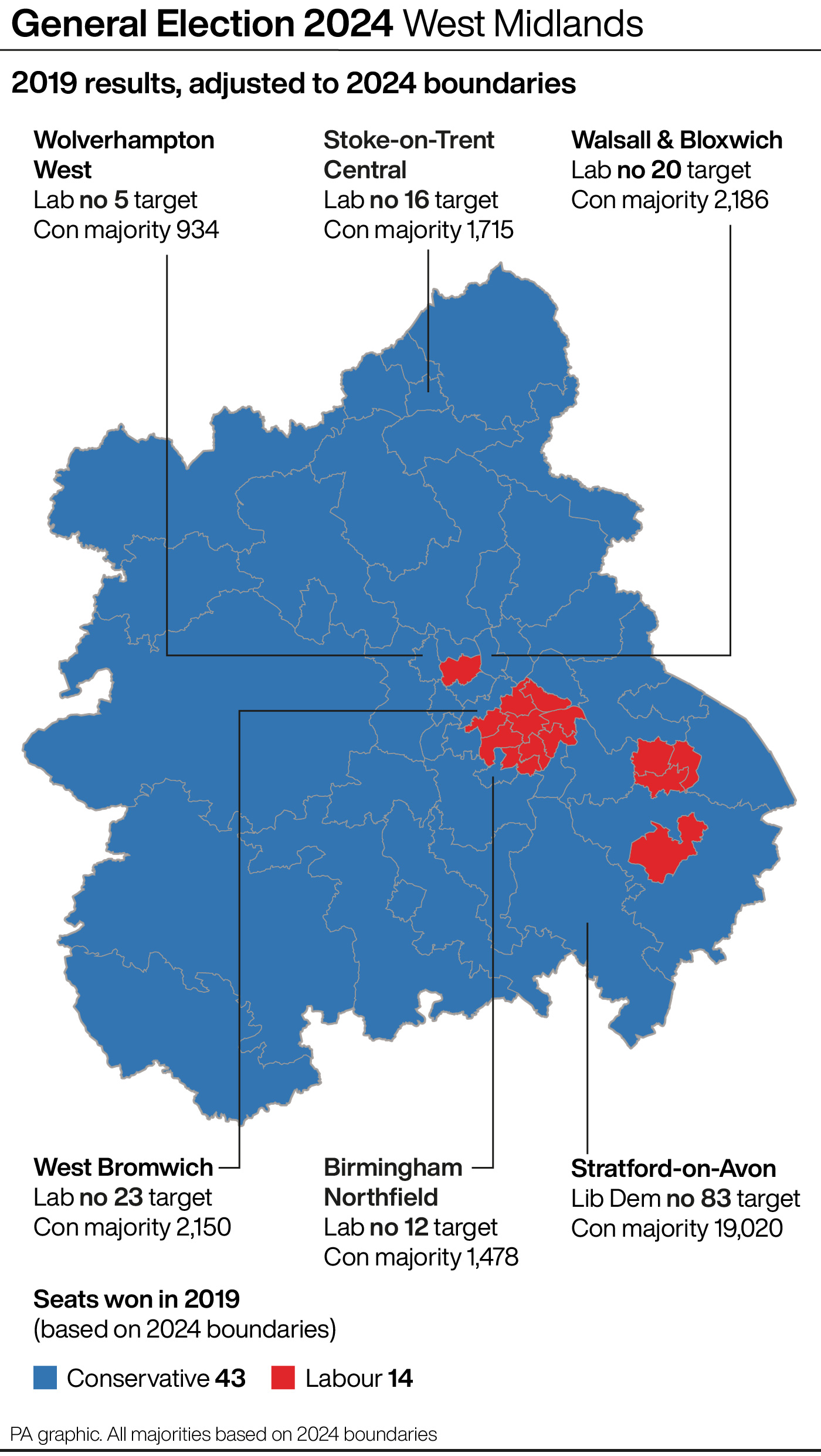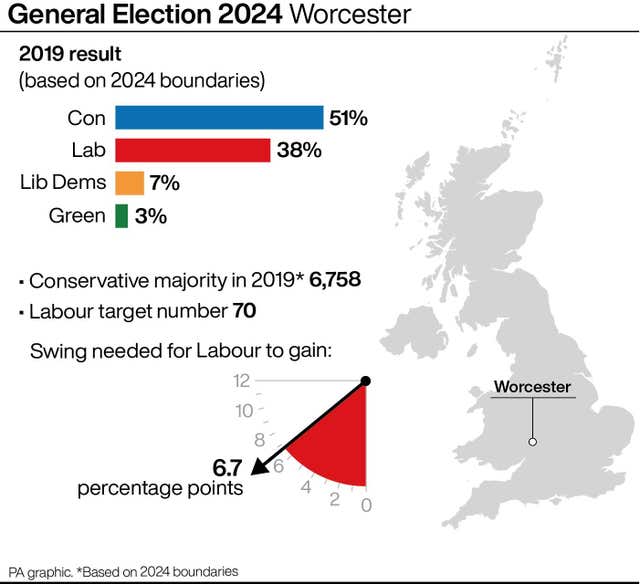There is a string of Tory-held marginal seats right across the West Midlands, all of which are being targeted by Labour, meaning the region will play a key role in shaping the outcome of the General Election.
A redrawing of boundaries has left the West Midlands with 57 constituencies, down from 59 in 2019, and had the last election been fought on these new boundaries it is calculated the Conservatives would have won 43 seats and Labour 14.
Notional results for the 2019 election based on the 2024 boundaries have also been calculated, in order to determine the scale of the challenge facing candidates this time, and it is these majorities that are used below.
The Tories’ most vulnerable seat in the region is the newly-created constituency of Wolverhampton West, where they are defending a notional majority of 934.
It needs a swing in the share of the vote of just one percentage point to change hands: small enough to rank it at number five on Labour’s nationwide target list.

Four other Conservative-held marginals would fall to Labour on a swing of 2.6 percentage points: Birmingham Northfield, Stoke-on-Trent Central, Walsall & Bloxwich and West Bromwich.
Birmingham Northfield and Stoke-on-Trent Central were both won by the Tories from Labour in 2019, while Walsall & Bloxwich and West Bromwich are new seats that are being treated as Conservative defences.
Elsewhere, Worcester is an example of a so-called “bellwether” seat, which means the result in the constituency has a habit of matching the overall result of the general election – in this instance, at every election since 1979.
The Tories are defending a majority of 6,758 in Worcester and the constituency is number 70 on Labour’s target list: exactly the sort of seat Sir Keir Starmer’s party would need to win to be on its way to forming a majority.

A total of 11 Conservative-held seats in the West Midlands would fall to Labour on a direct swing of 10 percentage points.
Wolverhampton North East is the eleventh and least vulnerable of these, and is another example of a constituency won by the Tories in 2019 following a long period of representation by Labour.
There is then a group of town-based seats: Telford, Rugby, Stafford, Halesowen, Nuneaton and Dudley; all of which have Conservative notional majorities of between 10,000 and 14,000, and all of which could change hands if Labour performs particularly strongly.
Dudley is a new seat at this election and Labour would need a swing of 16.2 percentage points to win, which is big enough to rank it at number 190 on the party’s target list.
Dudley North and Dudley South, which have been abolished at this election, were both won by the Tories in 2019.
The 14 seats Labour are defending at this election are concentrated in heavily built-up areas, with eight of them in Birmingham and three in Coventry, along with Smethwick, Warwick & Leamington and Wolverhampton South East.
Coventry North West is Labour’s most vulnerable constituency in the region, where Taiwo Owatemi is defending a majority over the Conservatives of just 208.
There are just two seats in the region where the Liberal Democrats came second in 2019: Stratford-on-Avon and Worcestershire West.
Stratford-on-Avon was represented from 2010 to 2024 by former Tory chairman and chancellor of the exchequer Nadhim Zahawi, who is standing down this year.
The Lib Dems would need a direct swing of 17.8 percentage points to take the seat, and their hopes have been boosted by their success in Stratford’s local elections in 2023, when they won a majority on the council.
Worcestershire West would need an even bigger swing of 21.3 percentage points for the Lib Dems to win.
All notional majorities and swings mentioned above have been compiled by professors Colin Rallings and Michael Thrasher of the University of Plymouth, on behalf of BBC News, ITV News, Sky News and the PA news agency, and will be used as the basis for reporting the gains and losses at the General Election.
You may also like: Police constable working in PM’s protection team ARRESTED over alleged election bets

